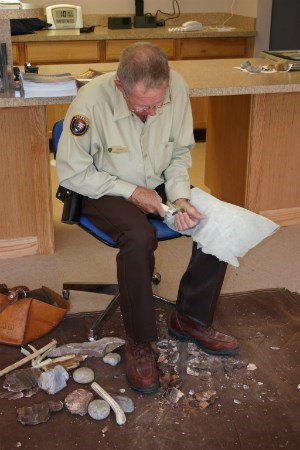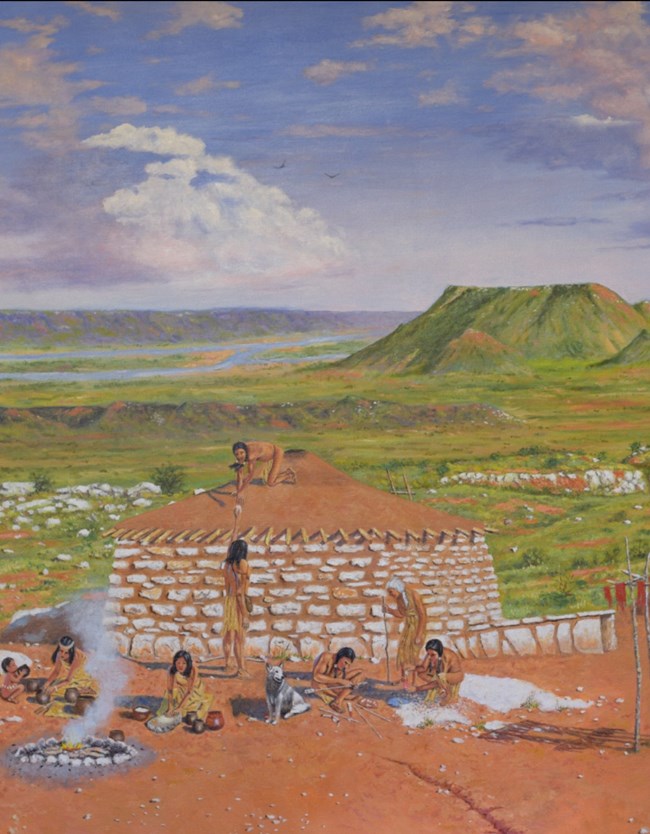
NPS Photo 
Scattered across the Canadian River region of the Texas Panhandle are remnants of prehistoric homes, workshops, and campsites—but few locations rival the dramatic landscape of Alibates Flint Quarries. Here, vibrant, agatized dolomite—known as Alibates flint—adds rich color to the terrain. While this unique stone is found across a 10-square-mile area, its greatest concentration lies within a 60-acre section atop a mesa within the monument. Today, more than 736 hand-dug quarries remain, each typically over six feet wide and marked by central depressions. Though time, wind, and rain have partially filled them with soil, their legacy endures. Ancient quarry workers unearthed unweathered flint by digging a foot or more beneath the surface into flint-bearing dolomite layers that could be up to eight feet thick. Artifacts made from Alibates flint have been discovered across the Great Plains—and as far-reaching as Canada and Mexico—testifying to the material’s value and the people’s expansive trade networks. 
Architecture of this period featured rectangular or semi-circular rooms with funneled entrance ways 10-12 feet in length with stone enclosures. To enter the dwelling one would have to be on hands and knees. Recent discoveries have shown the roofs of these structures are not flat as once thought, but in fact were pitched at a 7-9 degree angle, thatched and mortared with clay. Environmental conditions, including severe drought, coupled with encroachment from neighboring tribes from the West likely drove these Indians out of the region by the end of the 15th century. Preserving Cultural Resources
It is always exciting to discover evidence left behind by earlier people, but in order to preserve our history, it is vital that all cultural and historic artifacts remain undisturbed. Please help us preserve these special items. It is illegal to collect or deface artifacts. Digging and metal detecing are also strictly prohibited.
|
Last updated: June 11, 2025
